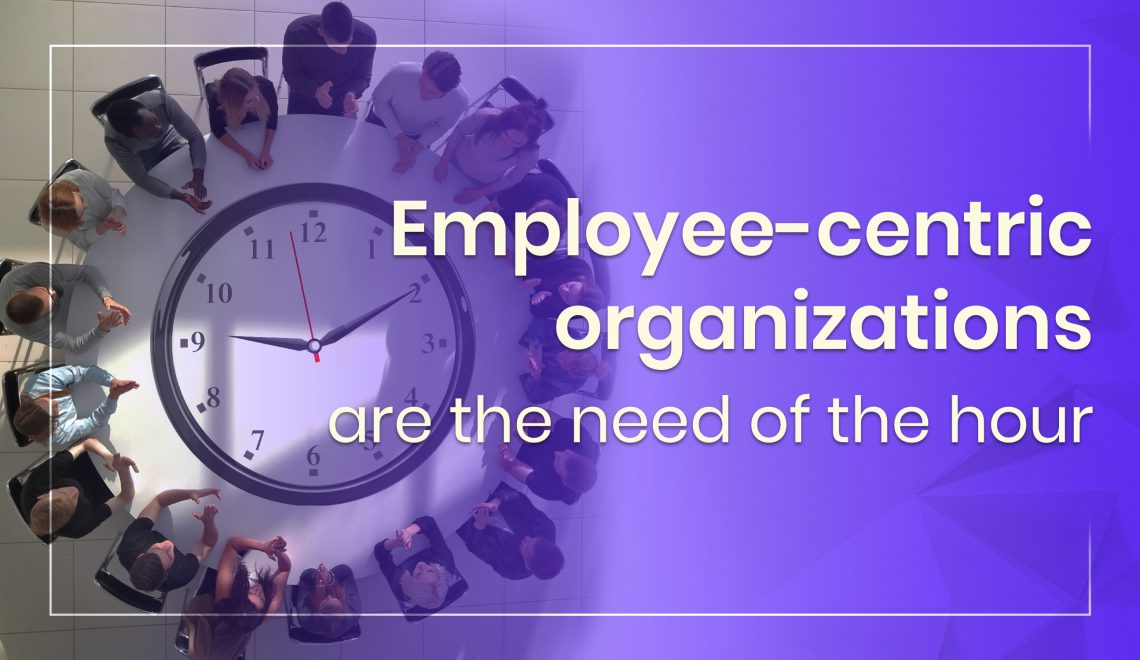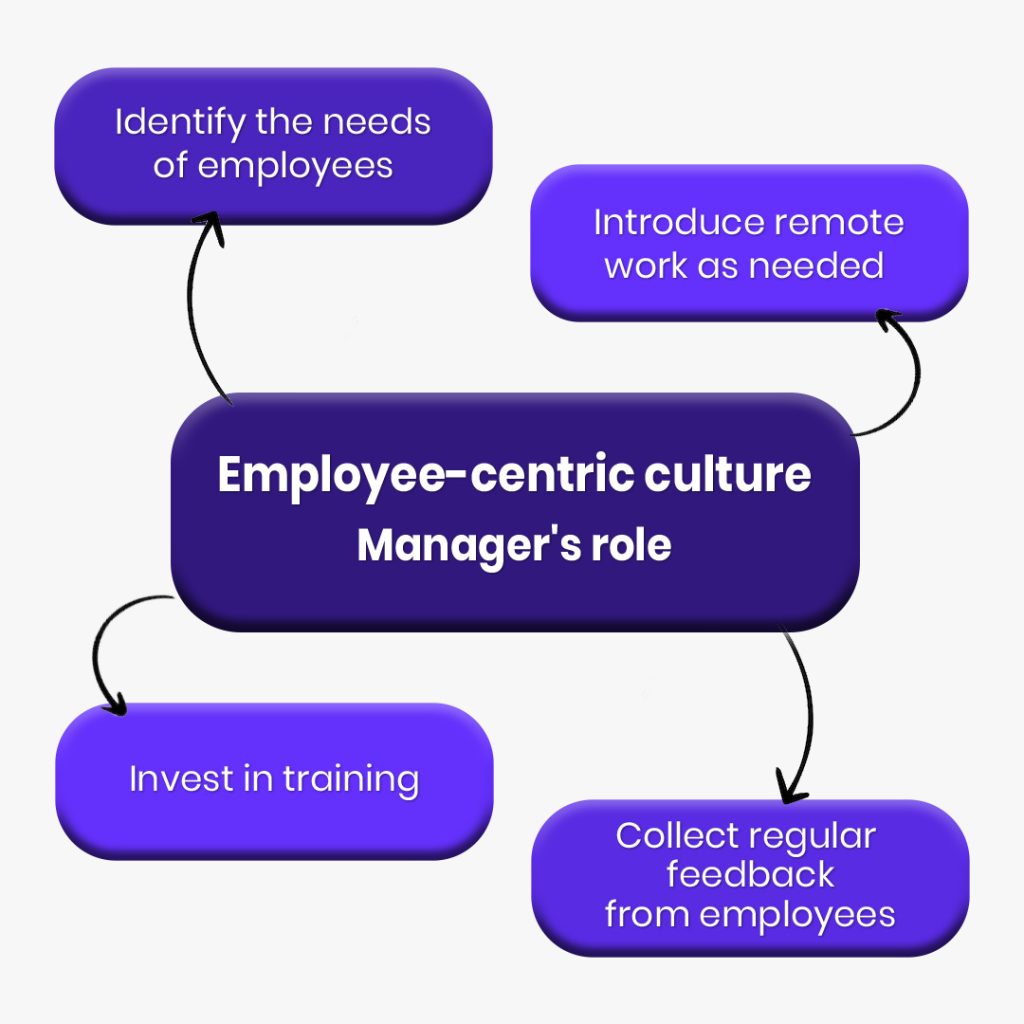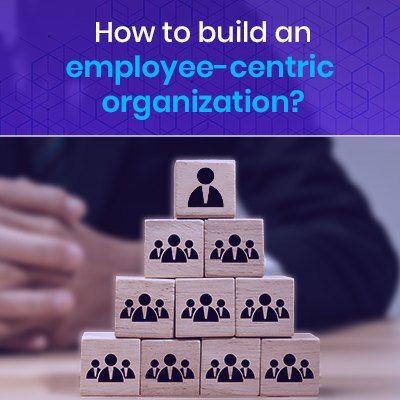
What happens when employees are disengaged? They come to work simply for the paycheck and complete their tasks as a routine. The business runs on zero motivation and creativity from the employees. Employee engagement has been proven to attract top talent, retain employees, improve the customer base, and help stay competitive. One can rightly say that employee engagement is fundamental to business success.
Recently, I was reading “Engaging the Hearts and Minds of All Your Employees,” by Lee J. Colan where the author provides a few recommended employee engagement strategies to achieve passionate performance from the employees. This book clearly puts forth passionate engagement as vital for business success. Employee engagement and employee-centric organizations are emerging as the primary force behind customer satisfaction.
Employee centric organization advantages
Make the work and workplace entertaining for the employees. A positive work environment where the employees voluntarily offer their maximum capability and potential results in high-performance teams and organizational growth. An employee-centric organization is the need of the hour to maximize employee engagement and drive productivity and creativity.
Recent studies show that 4 out of 10 employees are unhappy and disengaged at work. This puts the onus on the management to develop an employee-centric culture and move towards employee engagement. Employee engagement has been found to produce a 15 % increase in employee productivity and a 30 % increase in customer satisfaction. So if you are serious about a sustainable business employee-centric organization is what you should be looking at.
Employee centric organization approach
Feeling respected and appreciated is fundamental to human happiness. Take the workplace situation; employees spend long committed hours on the work and without respect, trust, and admiration at work resentment on their part is unavoidable.
Employee-centric organization business model is one that exhibits a work environment where the employees are respected and honoured for their contributions and are happy that their needs at work are completely taken care of. Issues minor or major are addressed promptly in open and transparent work culture. The result is a happy workforce that in turn brings in long-term customers.
Being employee-centric requires an organization to ensure that there is constant and transparent communication in the organization. A clear understanding of the company’s goals and also of the individual role and appropriate recognition for achievements can go a long way in boosting employee engagement. Promoting collaboration among the teams and automation to reduce repetitive tasks can tremendously change the work environment.
Going a step further, I would suggest that workplace design should also have employee centric characteristics. Ideally, the workspace should become a home away from home. It would be great to see spacious workplaces with natural lighting, optimally adjusted temperatures, and physical wellness spaces to create an atmosphere of well-being.
Manager’s role in building an employee centric culture
Creating an employee-centric organisational environment starts with employee-centric management. The interactions between the management and employees reflect in their work and in turn affect the interactions between the employee and customers. Management is no longer the boss but the mentoring force that supports the employees to perform, learn and grow.
What role can the manager play in promoting an employee-centric organization framework? Start by implementing these effective changes and create fun and positivity at work.

- Listen and identify the needs of your employees by conducting frequent surveys and identifying the measures to resolve the issues. Be empathetic and always give an ear to their frustrations, whether personal or professional. Congratulate them where deserved and support and train them if they require.
- Introduce remote work at times so that employees experience better work-life balance and feel happy with the flexible timings they get to take care of their families. This is a proven strategy to reduce stress and improve employee engagement.
- Invest in training to help the employees work efficiently. Training provides them with the satisfaction of career growth and a clear vision of progress. Provide transparency on the career tracks that are available in the organization.
- Collect regular feedback from the employees to gain insight into unresolved issues. Take appropriate measures and include required changes in your employee-centric policies.
Employee’s responsibility in an employee centric organization
As the management shifts towards employee-centricity, there are certain responsibilities on the employees for a smooth transition.
- Communicate the needs to the management effectively so that there are no pent-up frustrations. Only open communication can enable the management to address the concerns of the employees and become aware of their expectations.
- Share the knowledge and information gained during work among co-workers and peers to strengthen the knowledge base of the organization and bring in an atmosphere of trust and learning.
- Be creative and innovative in thinking and contribute ideas to improve the quality and efficiency of the business processes. Employees must participate actively in decision-making so that their voice is heard and included in the business strategies.
- Exhibit dedication, responsibility, and commitment to work. Employees are also expected to display team spirit and collaborate with their teams for a smooth workflow.
How to build an employee centric organization?

A workplace with a high level of employee engagement and positivity does not happen by itself. Conscious action is required on the part of the management to bring in the transition.
- Relationship between employees and their immediate supervisor is highly important. Are your employees happy with their supervisors? Do they feel stifled or restrained? Monitor the supervisor’s attitude and take corrective steps if required.
- Make the employees feel connected to the organization’s growth. When they see their contribution being a part of the growth they start engaging actively.
- Leadership should include a personal touch in the relationship with the employees. Addressing each employee by name will make them feel connected and recognized. Taking efforts to understand their personal background and having a personal chat once in a while will also help.
- Talent should never be unappreciated. Lack of recognition is the top demotivating factor at work. Reward and celebrate achievements.
- Provide the employees with a platform to voice their opinions and take part in the decision-making. Let the culture be open so that employees can voice even disagreements without fear.
- Continuing education should be regular so that the employee sees career growth and progress in the organization. Regular job rotation should be in place to reduce boredom.
- And finally, do not forget the compensation part. Ensure that you offer a competitive pay package to the employees. Restlessness from lesser pay results in demotivation and eventually attrition.
Make changes and let your employees come to the workplace happily bringing fresh ideas, creativity, and passion. Let’s put an end to Monday morning blues !!!
What does it mean to be employee focused?
Being employee focused refers to giving priority to employee needs and nurturing talent to create an environment where employees are valued and have the opportunity to grow.
How do you build employee experience?
The human resource policies should be realigned to reflect the needs and aspirations of the employees. There should be employee bonding activities and strong rewards and recognition programs to build workplace relationships.
What is the difference between a job-centred manager and an employee-centred manager?
A job-centred manager focuses primarily on the targets and often does not have any personal connection with the employees. An employee-centred manager focuses on both the team and targets and balances them so that employee growth is also promoted
What is the difference between the role of an employee Centric leader and a production Centred leader?
An employee-centred leader intentionally puts the employees first while a production-centred leader focuses on task completion.
What is leader centred approach?
Leader centred approach depends on authority and discipline and depends on self-realization for success.



